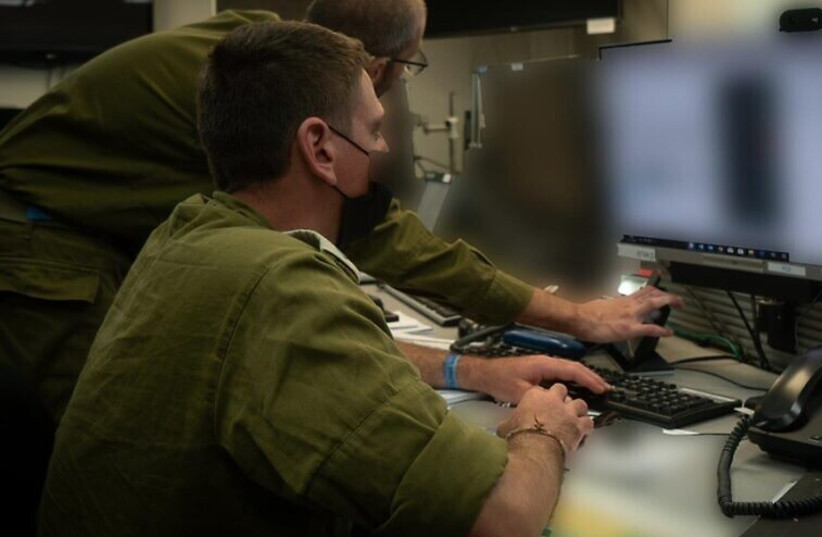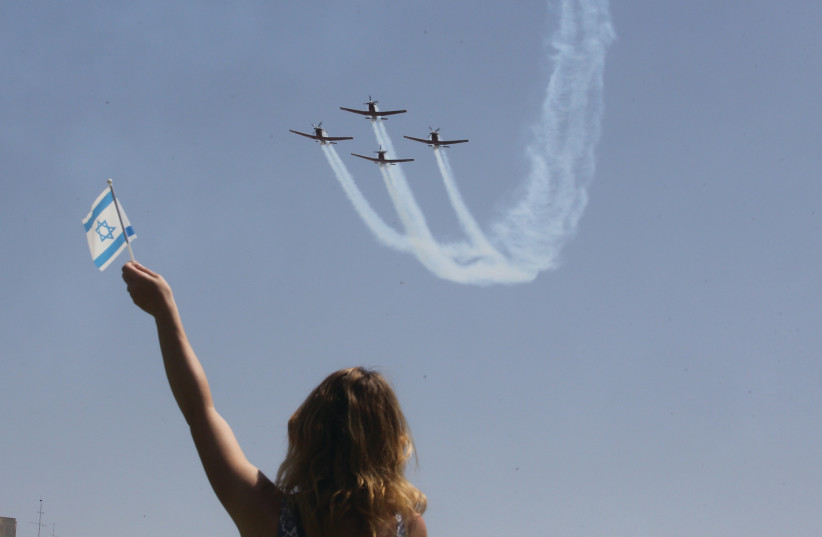Seventy-five years ago, a Syrian Druze officer was one of the thousands of Syrian Arab Army forces that invaded the newly created State of Israel. But he then made a move that would affect not only him, but future generations of his family: He switched sides and soon became an officer in the Israel Defense Forces.
He raised his family on the ethos of serving and fighting for the country he once fought against – and now his grandson, Lt.-Col. “A.” (whose full name cannot be published) has risen to be one of the highest-ranking Druze in the IDF.
Breaking glass ceilings, he became the first Druze to complete the prestigious Israel Air Force pilot’s course in 2007.
But he didn’t always want to be a pilot. His first choice was to serve in the elite Sayetet units. But when he got called for the Air Force, he thought, why not?
“No Druze had ever completed the course, so I took the risk and really enjoyed it,” he said, adding that “I finished my first flight with a huge smile.”

A. told The Jerusalem Post that he enjoyed not only the challenge of the course, but the vibe of the other cadets.
While he said it was a “non-issue” for him to have completed the course, “I understood that it was a big deal for the community.”
Over the years, A. has taken part in intensive active duty and flown during war and several operations including Operation Pillar of Defense, Operation Protective Edge and more.
He also served as commander of the Air Force’s flight school before his current role as commander of the Fire Control Center in the Southern Command.
In his current role, he brings together intelligence, air force, computing and other personnel to prepare targets for future attacks.
The fire control center is able to provide the full operational picture for pilots before they take off on their missions, including what kind of munition is best suited for their targets. And with different corps working together, troops are not tied to one specific outlook but can think outside the box.
AS AN officer in the IAF, A. knows what the pilots need – and as commander of the Fire Control Center, he is able to provide the necessary intelligence that will produce the best possible results.
While he wasn’t in his current role during Operation Guardian of the Walls last May, he says that there are a few thousand targets in the military’s target bank – more than there was before the fighting began.
The targets hit by Israel during the fighting ranged from rocket launchers and drones to research and development facilities for rocket production and manufacturing, homes of key Hamas commanders and senior terror commanders themselves, as well as Hamas’s “Metro” underground tunnel network.
The military also struck Palestinian Islamic Jihad (PIJ) and taking out dozens of military assets belonging to the terror group.
Following the 11 days of fighting, the IDF admitted that while it viewed the campaign as a success because it destroyed significant military assets, the military admitted that there was an issue in finding and destroying the rocket caches in the Gaza Strip.
Hamas and PIJ are believed to have a combined arsenal of 14,000 mortars and rockets, including thousands of short-range ones and many hundreds that can reach central Israel and beyond.
“Long-range missiles are still a concern, but the amount of intelligence on them is much better,” A. said. “We will have significant results in the next war,” but “we will never have zero rockets and hermetically sealed airspace.”
While he was not in the role during Operation Guardian of the Walls, he studied the fighting intensively in order to fully understand what the center did during the conflict, the long-term consequences and what can be learned and implemented in the next war.
“The main thing is to bring the best intelligence on a target and to work together with intelligence, air force, ground forces and other security bodies,” he said. “Working in harmony together brings about better intelligence and targets.”
A. EXPLAINED that there are several departments in the Fire Center, with troops focused on specific topics. The departments separately obtain precision intelligence on targets and regularly study them in order to see if they are still threats and if they are, whether or not the threat is immediate.
In addition to military infrastructure, the IDF has struck individuals launching rockets toward Israel and has also carried out targeting killings in the Gaza Strip – though they are rare.
“We also look at people and we have the capabilities to take them out,” he warned. “Any person who wants to hurt us, we will get to them.”
There has been heavy criticism leveled at Israel for its strikes in the Gaza Strip, with many saying that the Jewish state does not differentiate between civilian and military targets. In one incident, a family of 10 was killed after an IAF airstrike destroyed a three-story building in the Shati refugee camp.
Eight children and two women, all belonging to the Abu Hatab family, were killed, in a strike that Israel said was targeting senior Hamas members who were in the building.
The IDF maintains that it takes significant steps to prevent civilian casualties in its airstrikes and, according to A., “we do everything we can to prevent damage and death to civilians on the other side, despite the fact that they do not.”
A. told the Post that every mistake has been investigated in depth by senior officers, and almost a year after the fighting there are still some cases being investigated in order to understand the mistakes that were made.

“I trust my soldiers with my eyes closed,” he said.
Since the May fighting, there has been a tense calm between Israel and the Gaza Strip. In March, Jerusalem authorized 20,000 work permits for Gazans to work in Israel. The decision was made as Jerusalem tried to reduce tensions ahead of the Ramadan holiday.
But, it wasn’t Gaza that exploded.
In less than three weeks between March and April, 14 Israelis were killed in terror attacks carried out by Israeli-Arabs and Palestinians in the cities of Beersheba, Hadera, Bnei Brak and Tel Aviv.
The Post spoke to Lt.-Col. A. the day after the attack in Beersheba.
“It’s a complicated and eruptive atmosphere,” he said, adding that the military had “raised its alerts” in case of any spillover from the Hamas-run enclave.
“We have our hands on the pulse and we know when to raise our readiness in order to stop attacks,” he said. “There have been incidents in the past six months, but we feel that the other side wants quiet, like us.”
WHILE A. has some time until he completes his term as commander of the Southern Command’s Fire Center, he is already thinking about his next role, emphasizing that it must be as meaningful as all the other ones that he served in. But, this time he is looking at positions that will have a direct impact on the Druze and other minority communities.
The Druze of northern Israel make up around 145,000 of Israel’s 1.95 million Arab citizens. Like Jews, members of the Druze community are drafted in large numbers into the IDF, and many serve in some of the military’s most elite units.
One role he is interested in is the Commander of the Population and Minorities in the IDF’s Manpower Directorate. He’s already established several military academies within the Druze community that push high school students to the Air Force, so serving in the directorate would allow him to have an even greater impact on his community.
Another position he can see himself excelling at would be the defense attaché to Washington.
With a long family history of service, a strong attachment to the country, and his experience in various roles in the military, A. believes that he would have a big impact should he serve as attaché.
Though A. is a trailblazer in his own right, he comes from a lineage of family members who have reached senior positions in the military and Israel Police.
“A lot is because of my grandfather, but my family really likes to excel,” he said.
Though Druze women are not obliged to enlist and serve in the IDF, there are some who have joined the military police.
“The Druze culture has changed from a more male-centered mentality,” he said. “Women are playing a bigger and stronger role.”
Married with three children, he is originally from a town in northern Israel and has lived on an airbase in southern Israel for close to two decades.
And that, he says, is what makes his job all the more meaningful.
“I am literally protecting my own home.”
